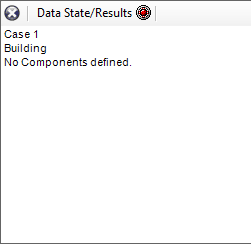Passive:Dynamic Simulation: Unterschied zwischen den Versionen
SebSta (Diskussion | Beiträge) |
SebSta (Diskussion | Beiträge) Keine Bearbeitungszusammenfassung |
||
| Zeile 8: | Zeile 8: | ||
<br> | <br> | ||
Setpoints for WUFI®Plus in detail: | Setpoints for WUFI®Plus in detail: | ||
<br> Temperature: Design Minimal Temperature = indoor temperature, Design Maximal Temperature = overheating temperature, | <br> '''Temperature:''' Design Minimal Temperature = indoor temperature, Design Maximal Temperature = overheating temperature, | ||
<br> Ground temperature: New optional ground climate added with Relative Humidity = 99 constant, Temperature = sin curve with min/max values and phase shift from WUFI®Passive calculation | <br> '''Ground temperature:''' New optional ground climate added with Relative Humidity = 99 constant, Temperature = sin curve with min/max values and phase shift from WUFI®Passive calculation | ||
<br> Internal loads: | <br> '''Internal loads:''' | ||
<br style="clear:both" /> | <br style="clear:both" /> | ||
Version vom 17. Juli 2013, 15:04 Uhr
Switch to dynamic Mode
The major advantage of WUFI®Passive is the possiblity to compare the results of the static passive house calculation method with the dynamic simulation of WUFI®Plus.
Please note that the simulation of WUFI®Plus requires additional input data, especially for materials like heat storage capacity or hygrothermal properties.
Set Boundary Conditions from Passive House
Certain input parameters can be taken over from WUFI®Passive to WUFI®Plus. To simplify this step new a button "Set Boundary Conditions from Passive House" has been introduced. This option will set reasonable values for the dynamic simulation mode for better comparison of the results.
Setpoints for WUFI®Plus in detail:
Temperature: Design Minimal Temperature = indoor temperature, Design Maximal Temperature = overheating temperature,
Ground temperature: New optional ground climate added with Relative Humidity = 99 constant, Temperature = sin curve with min/max values and phase shift from WUFI®Passive calculation
Internal loads:
